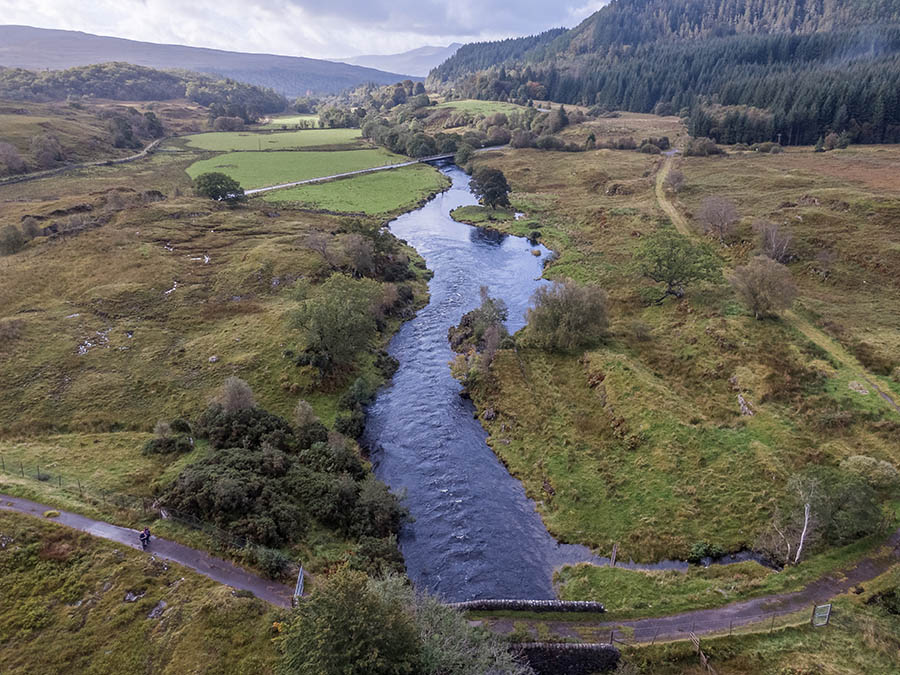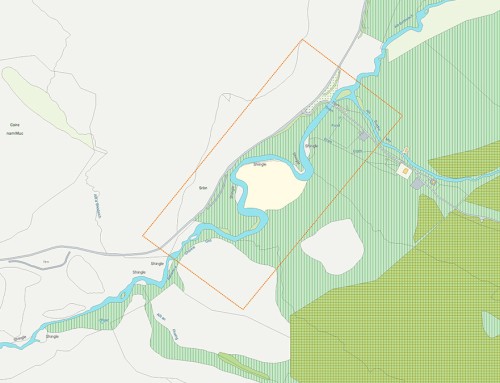Nature Restoration Fund – Development Phase
Ardtornish are pleased to have been awarded a Nature Restoration Fund grant by NatureScot to develop plans to improve river habitat health. This is part of a wider plan to create a nature-rich, ecologically connected, working landscape in the Aline catchment, from hilltop to riverbed.
The aim of this phase of work, running from February to the end of May, is to design a project that will increase the biodiversity value, climate resilience and ecology of the Aline catchment habitats.
There is a lot of potential for habitat creation and improvement in the Aline catchment, and we are currently undertaking surveys to refine the plans for the next stage of the project, should we be awarded the next stage of funding by NatureScot:
At the moment we are surveying the potential for
- riparian native woodland created through a combination of planting or natural regeneration
- Woodland and moorland habitats to be improved through strategic conservation grazing
- Whether strategic fencing could contribute to a long term deer management startegy to benefit a range of habitats
- in-river restoration techniques to improve the biodiversity and climate resilience of the Aline and its tributaries
- Expansion and development of capacity within the COALAS oyster breeding programme in Loch Aline
- And the appetite for partners and the community to participate in citizen science to support the monitoring of the freshwater habitat health in the catchment
The Project
To maximise the positive impact of interventions on the Aline catchment’s natural environment, the project design will focus on connectivity of habitats, and species best suited to the area. The project aims to contribute to the diverse mosaic of habitats in the glen, providing homes and food sources for a wide range of native species.
By encouraging establishment of vegetation, we hope to not only to create habitats for wildlife, but also to sequester carbon and stabilise riverbanks. Measuring baselines from which to monitor the impacts of these interventions will form part of ongoing work of the catchment project in demonstrating the benefits of the project and ensuring they continue to provide positive environmental and ecological outcomes:
Riparian planting – The project seeks to revegetate areas of both blackwater and white glen this through a combination of planting and natural regeneration of woodland to create natural shade and bank stabilising.
Large woody structures – As a result of the lack of riparian trees in the catchment, there is little in the way of natural large woody structures (LWS) in the river. With this project, we propose to introduce LWS throughout 5km of river, co-ordinating with areas for riparian woodland creation. The LWS will deliver immediate benefits to the river for flood and drought resilience, biodiversity, river habitat creation for freshwater fish and invertebrates: when the LWS decay, the riparian trees will take over the role by introducing wood and roots to the river. The development phase of the project will include geomorphic surveys to identify potential appropriate sites for introducing LWS, being mindful of local Fresh Water Pearl Mussel populations and taking care not to disturb those habitats.
Montane & Diverse Scrub – In recognition of the need for both species and structural diversity in habitats throughout the glen, creation of low-density scrub habitat through strategic moorland grazing to create disturbance will overtime contribute to the provision of vital habitat for birds and invertebrates, as well as contributing to climate resilience of the catchment.
Establishing flora communities and improving pollinator habitat – Part of the project area falls within a Buglife B-Line (see: https://www.buglife.org.uk/our-work/b-lines/). This indicates that pollinator habitat is fragmented and of low quality in some areas. Where we plan to restore riparian habitats, we will explore opportunities to increase ecosystem diversity and function and improve pollinator habitat by establishing appropriate native plant communities, using local provenance seed, in areas where natural regeneration and colonisation may be slow.
Strategic Fence Lines – We are exploring the possibility of installing several strategic fence lines in order to better manage deer populations in the catchment and promote habitat establishment.
Collaboration
The project has been developed in conjunction with various organisations and individuals and continues to draw on their expertise to ensure that it delivers the best possible outcomes for the community, wildlife and landscape on Morven and the Aline catchment specifically.
The project is being led by Ardtornish with CAOLAS, Scottish Wildlife Trust, Buglife, RSPB, Alliance for Scotland’s Rainforest and Lochabor Fisheries Trust all acting as project partners and advisors.
The project has also sought support and advice from Ardtornish Ecological Advisory Committee and local ecologist Matthew Wilson.
Starting a Dialogue
The project involves interventions that constitute a significant land use change. We would therefore like to notify interested parties of the proposal and incorporate their feedback into the project design as part of the development phase.
Any feedback received will be recorded and incorporated in the project design process. The outcomes will be submitted to the funding body as part of the project report.
We are keen to share the thinking behind the proposed interventions and in turn, would like to receive your views and ideas relating to the Aline Catchment Restoration project.
The community engagement period will run from 6th March to 8th May 2023. A public consultation event will be held on Friday 28th April between 3 and 6pm at The Hub, Lochaline. No need to book, please just drop in to see the plans and discuss with representatives from the project partners.
If you would like more information ahead of the event please contact:
Charlie Davis
Project Manager, Aline Catchment Restoration












